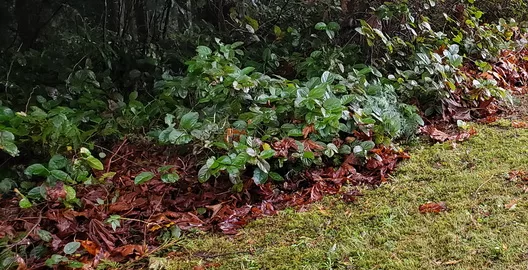Published in Australia in 2002, Bringing Back the Bush – The Bradley Method of Bush Regeneration encapsulates the principles and methods advocated by sisters Eileen (d. 1976) and Joan Bradley (d. 1982). They developed their ideas based on years of work restoring portions of Ashton Park in Sydney. The book consists mainly of Joan’s writings and notes that were assembled and edited by a group of devotees. Below, I summarize the method’s three main principles and thoughts about its applicability to the Puget Lowlands.
1. “Work outward from good bush areas towards areas of weed.”
The basic lesson learned by the Bradley sisters in Ashton Park was that “given half a chance, the bush would fight back on its own behalf.” They found that native plants would naturally, and relatively quickly, spread from “good areas” with robust populations of native plants into adjacent ground from which the weeds had been removed. After protecting good areas by removing scattered weeds, they removed weeds in narrow strips adjacent to good areas. They “held that advantage” by carefully weeding the strips for several years until native plants were well-enough established to deter weeds and enable further strips. They did not supplement natural regeneration with any planting, but let the native plants “choose where and when to grow” on their own, by simply “releasing them from the pressure of weed growth.”
2. “Make minimal disturbance to the environment.”
The Bradley sisters worked on perfecting “the gentle art of weeding” with the least possible disturbance to the soil and existing native plants. They hand-weeded slowly but efficiently using minimal tools, always trying to improve their methods for each size and type of weed. They wore soft shoes, tread carefully, replaced duff, and avoided stepping on native plants.
3. “Do not overclear.”
They found that any cleared ground not adjacent to established native plants quickly filled up with weeds. In fact, they found that overclearing was almost always worse than doing nothing, taking longer for native plants to become established and requiring more work overall.
Will it work in the Puget Lowlands?
“Do not overclear” — I think that is the principle that most applies to restoration in the Puget Lowlands. Otherwise, invasive plants do take over, and the forest steward has to be committed to years of follow-up weed removal else the initial clearing is for naught. Perhaps the Australian Bush is different, but I haven’t seen native plants in our region naturally regenerate rapidly enough to deter weeds. Salal and Oregon Grape spread very slowly. forbs that spread by seed, like Candy Flower, Starflower, and Big-Leaved Avens spread more quickly, but they don’t keep out invasives like Herb Robert, Nipplewort, and Wall Lettuce. I think successful restoration in the Puget Lowlands usually requires dense planting, mulching, and irrigation. However, since dense plantings are costly (time and money) one should always think twice before overclearing.
